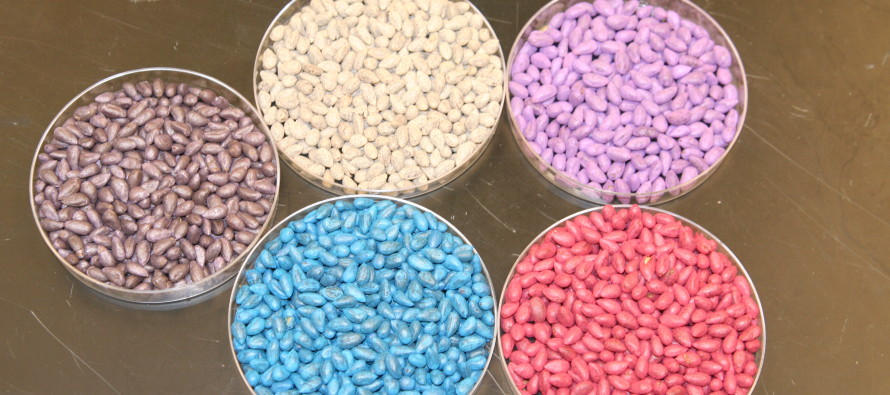Thrips Management in Cotton

 Many of you have heard us talk about the declining efficacy of seed treatments against thrips throughout the winter meeting circuit. We started seeing the first signs of inadequate control about 4 years ago and the problem has seemed to get worse every year. Last year, most of the cotton in Mississippi was sprayed for thrips at least one time and many fields were sprayed multiple times, even behind a seed treatment. At this point, thiamethoxam (Cruiser, Avicta, or Acceleron N) has been impacted more than imidacloprid (Gaucho, Aeris, or Acceleron FI).
Many of you have heard us talk about the declining efficacy of seed treatments against thrips throughout the winter meeting circuit. We started seeing the first signs of inadequate control about 4 years ago and the problem has seemed to get worse every year. Last year, most of the cotton in Mississippi was sprayed for thrips at least one time and many fields were sprayed multiple times, even behind a seed treatment. At this point, thiamethoxam (Cruiser, Avicta, or Acceleron N) has been impacted more than imidacloprid (Gaucho, Aeris, or Acceleron FI).
While travelling around the Delta earlier this week, I noticed a lot of cotton up and at the ideal thrips stage. So far, the widespread rain showers have helped to keep thrips numbers low in a lot of the cotton, but that is probably not going to last. The cooler temperatures that we are experiencing right now will slow plant growth and the cotton will remain susceptible to thrips for a longer period of time. Under these conditions, it is important to not only look at thrips numbers, but also look at injury to newly emerged leaves. When it is cool and plant growth is slow, the number of thrips that can cause significant injury to seedling cotton plants is a lot less than when growing conditions are ideal.
Foliar sprays are recommended when you find at least one thrips per plant and immatures are present. In the past, we wanted to wait until immature thrips were present to allow the seed treatments time to work, so that we were not making multiple applications targeting migrating adults. The presence of immatures was a sign that adults were surviving and indicates that the seed treatment was starting to play out. Over the last couple of years, we have started seeing immature thrips earlier and more often than in the past. That is just another indication that the seed treatments are not performing as well as they used to perform and is causing sprays to be triggered earlier than usual.
In 2013, the impact on imidacloprid based seed treatments was not as bad as on thiamethoxam based seed treatments. This year, our general recommendation has been to treat cotton with thiamethoxam almost like it does not have a seed treatment. In other words, you may need to be a little more aggressive with thrips management on cotton that does not have an imidacloprid based seed treatment. This does not mean that Aeris, Gaucho, or Acceleron FI will not need to be sprayed, it just means that damage has not been quite as bad on those treatments.
In terms of treatment choices, any of the OP’s should do a good job. At this point in the year and knowing that we will likely be spraying plant bugs in a couple of weeks, it is probably best to go with the least expensive option that still provides adequate control. That would be acephate or dimethoate at 0.2 lb ai/A. Bidrin at 3.2 oz/A is another good option. It will cost a little more than the other options, but it is less likely to flare other pests. If you are concerned about flaring spider mites and want to eliminate the risk of flaring this pest, Radiant at 1.5 oz + a surfactant is a better option.




Let me tell You a sad story ! There are no comments yet, but You can be first one to comment this article.
Write a comment